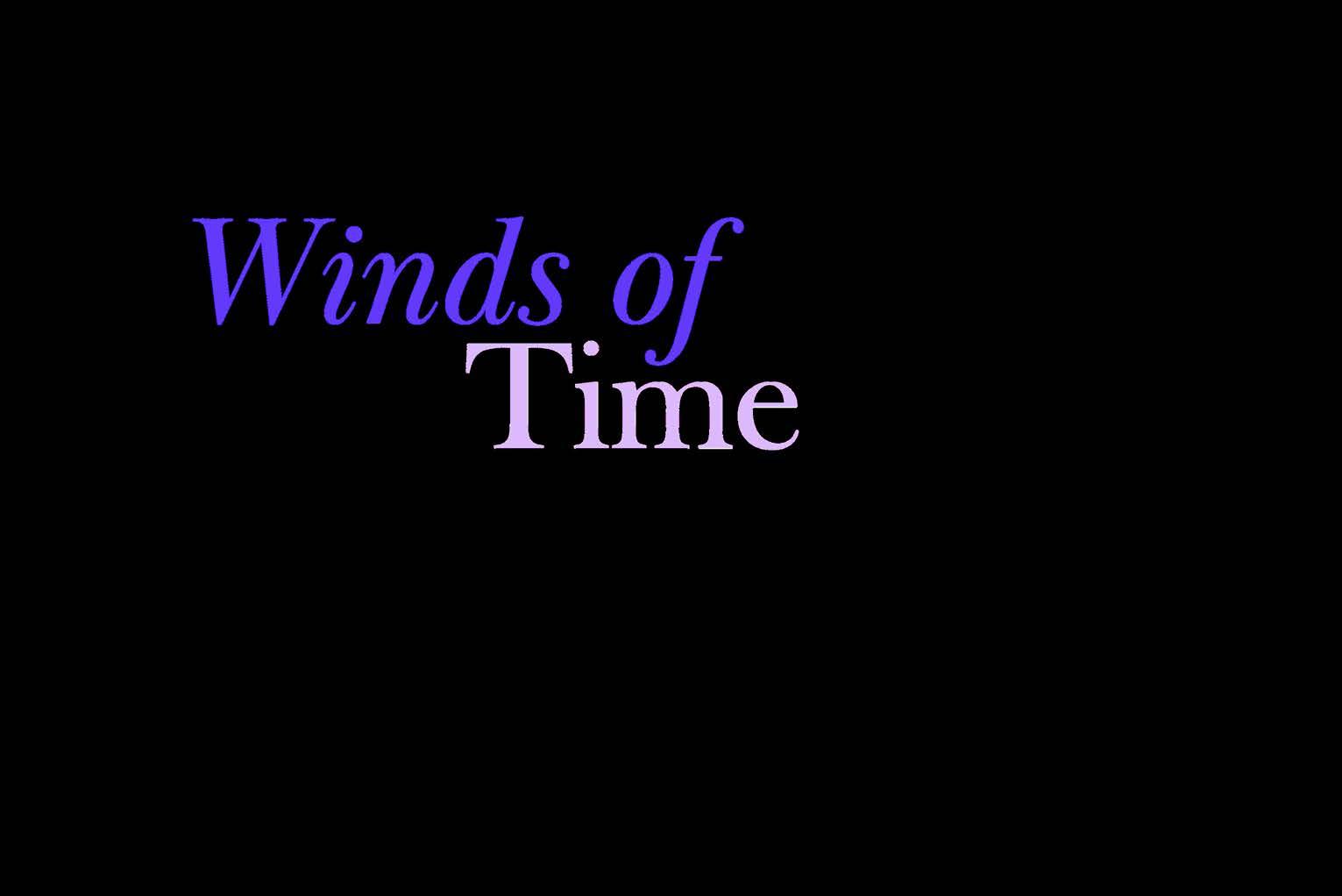
12 minute read
Program Notes

— program notes — Ode to NH

Brandenburg Concerto No. 2 in F Major, BWV 1047 (1721)
Johann Sebastian Bach (1685–1750)
Originally titled by the composer as “Six Concertos with Several Instruments,” the pieces collectively known today as the Brandenburg Concertos have been consistently hailed as hallmarks of the musical Baroque since their rediscovery and publication in 1849. The six concertos were gifted together as a set to Margrave Christian Ludwig of BrandenburgSchwedt (1677–1734), a member of the famed House of Hohenzollern whose individual historical recognition is most frequently tied to musical works bearing his name. The margrave had a penchant for music and met Bach during the composer’s 1719 stay in Berlin. Taken by his interest in his compositions, two years later Bach compiled the music for six concertos of varying instrumentation and had the manuscript parts delivered to the margrave. The parts, which were all written out by Bach himself (instead of a copyist, as was usual practice), were accompanied by a lengthy and humble dedication that thanked the margrave for his interest. Most German courts maintained a small band of instrumental musicians charged with providing festive and ceremonial music, making Bach’s gift of brilliant concertos a fitting choice for the musically-inclined margrave. The works were collected from pieces composed during Bach’s time as Kapellmeister at Köthen and possibly before; such musical recycling was a common practice for Bach and other musicians of his era. Aside from not fitting the unique instrumentation of the margrave’s personal band, the music also proved too difficult for the court musicians to play. Thus, it is unclear if the concertos were ever played at Brandenburg during the margrave’s life. Each of the six concertos has a unique profile. Bach not only varies the number of movements among the pieces, but each concerto uses a different set of solo and accompanying instruments. For instance, the first concerto, a work in four movements, features two natural horns (corni di caccia) accompanied by a collection of winds, strings, and continuo (usually a combination of harpsichord, cello, and viola da gamba). The well-known third utilizes only strings, featuring three violins, three violas, three cellos, and a harpsichord as the only instruments. The second Brandenburg concerto utilizes four solo instruments: trumpet, recorder (flute), oboe, and violin. A full complement of strings and harpsichord (as basso continuo) function as the ripieno, or non-solo parts. The second concerto is perhaps most popularly recognized as the opening for Great Performances. Still, among musicians, it is well known for having one of the most fiendishly difficult trumpet parts due to its high range and florid writing. The difficulty of this part perhaps betrays its origins: it seems likely that these concerti originated as a work to feature one of the two highly talented court trumpeters of Köthen, where Bach worked from 1717–1723. With its frequent alternation or dialogue between solo and ripieno parts, this piece is a textbook example of the concerto grosso form. Although written for four diverse solo instruments, the string accompaniment and transparent textures give this threemovement concerto a light and sparkling feel.
Horn Concerto No. 4 in E-flat Major, K. 495, Mvt. I (1786)
Wolfgang Amadeus Mozart (1756–1791)
The French horn has enjoyed a long history as a featured solo instrument, with many wellknown Baroque and Classical composers such as Telemann, Vivaldi, Handel, and Haydn writing concertos that highlighted the instrument on its own or as part of a group of solo instruments. Mozart’s Fourth Horn Concerto thus participates in a long tradition of horn concertos, but its origin owes to a deep friendship between the hornist Joseph Leitgeb (1732–1811) and the Mozart family. Like many, if not most, wind players of the period, Leitgeb was proficient in multiple instruments, first learning violin from his father. However, his skill on the horn was remarkable, earning the praise of fellow musicians and allowing him multiple opportunities to perform as a featured soloist. During his stay in Salzburg, Leitgeb worked with Leopold Mozart, Wolfgang’s father, and developed a relationship with the Mozart family. When Leitgeb left for Vienna in 1777, Leopold assisted the hornist with a loan to purchase a small home. Wolfgang honored his friend with various horn pieces, including three of his four horn concertos and the quintet. Leitgeb played on a natural horn—a valveless instrument that required the performer to manipulate pitch with their lips, air control, and hand. Leitgeb perfected the practice of using his hand to adjust pitch inside the instrument’s bell (a practice known as “hand-stopping”), which allowed him to play chromatic notes otherwise impossible on the natural hand. Mozart’s Horn Concerto No. 4 was the last of the composer’s horn concertos and has become his most famous, constituting a core work of the horn repertory. The first movement, which begins with a lively orchestral introduction, allows the horn to shine as it moves between soaring arpeggios (a technique common for pieces written for the natural horn) while showcasing the chromatic lyricism that would have been distinctive of Leitgeb’s playing. The frequent jumps in register from low to high pitches also showcase the virtuosity of the horn player. Although the concerto is perhaps best known today for its finale, the first movement is enjoyable on its own, revealing not only the skill of the soloist but also Mozart’s ability to craft sparkling works with memorable melodies.
Quintet in A Minor for Bassoon and String Quartet, Mvt. III: Allegro
Édouard Du Puy (1770–1822) Carl Anton Philipp Braun (1788–1835)
In the 18th and 19th centuries, the string quartet was the most esteemed genre of chamber music. The string quartets of Haydn and Mozart served as the par excellence for generations of composers, who saw the genre as a way to demonstrate compositional prowess and participate in one of the most popular and revered genres of the Classical and Romantic eras. The standard string quartet—two violins, a viola, and a cello—would remain the primary model. Still, composers would often add to this ensemble to explore sonic combinations or to accommodate social circumstances, such as an additional player of a specific instrument. A contemporary of Beethoven, the Swiss-born Du Puy was a versatile artist who held positions across Europe as a pianist, singer, violinist, and teacher. Following his studies in Paris and a short tenure as concertmaster in Rheinsburg (Brandenburg, Germany), he moved to
Stockholm, where he worked in the royal chapel and sang in the royal Swedish opera. A political disagreement (and perhaps an entanglement due to an affair with the official mistress of Prince Frederick Adolf) resulted in Du Puy’s banishment from Sweden, so he re-established himself in Copenhagen, teaching music and eventually working for both the Danish royal chapel and royal opera. The amorous composer found himself in yet another love affair, this time with a Danish princess, and was thus forced to leave Denmark on short notice. The ousting of the former Swedish king, Gustav IV, allowed Du Puy to return to Stockholm, where he resumed work as a court violinist, singer, and conductor. Du Puy’s various appointments are reflected in the range of his works, which include ballets, incidental music, divertissements, violin concertos (self-premiered), and instrumental chamber pieces. Despite his many compositions, Du Puy is mainly unknown to audiences outside of Scandinavia today, and his quintet for bassoon and string quartet is likely his best-known piece. Owing to the rare instrumentation of the work, it seems likely that the work was written with a particular bassoonist in mind, but little is known of the piece’s origins. Moreover, the last of the three movements was penned by a colleague, the oboist Carl Anton Philipp Braun. Like Du Puy, Braun worked in both Copenhagen and Stockholm. In addition to his performing, he penned a handful of pieces that included large-scale orchestral works, military marches, and even solo piano works. The fact that the last movement bears the handwriting of Braun suggests that the last movement was composed by the oboist as a posthumous tribute to Du Puy. The first known records of performance date to 1830, eight years after the passing of Du Puy. The lively finale, a rondo, is a tour-de-force for the bassoonist, who functions largely as a soloist in the last movement, which showcases the instrument’s three-and-a-half octave range. The required virtuosity of this last movement has led to a performance tradition in which the finale is performed as a concerto with solo bassoon and string accompaniment, with multiple string players per original part. This performance tradition will be featured on tonight’s concert.
Carl Maria von Weber (1786–1826)
The German composer Carl Maria von Weber may be best remembered today for his operas. Still, the prolific composer who lived a tragically short life penned dozens of works for voice, piano, and instrumental ensemble. The clarinet, which underwent a handful of technical and performing innovations at the end of the eighteenth century, became a favorite instrument of Weber, owing in no small part to a friendship he developed with clarinet virtuoso Heinrich Joseph Baermann. In 1810, as part of an effort to establish himself as a respected composer, Weber embarked on a tour of Germany, stopping in Berlin in 1811. Berlin was home to an esteemed court orchestra, which counted Baermann as its principal clarinetist. Upon his arrival in Berlin, Weber immediately wrote a small work for the talented clarinetist, the Concertino for Clarinet in E-flat Major, Op. 26. Baermann premiered the work to critical acclaim, immediately prompting German King Maximilian I to commission two more clarinet concertos. The concertino thus not only helped establish Weber’s reputation as a composer but also initiated a fruitful relationship between the composer and clarinetist. Following the performance of the second concerto, Baermann and Weber would ultimately tour together, helping to secure Weber’s fame as a first-rate composer. Befitting of its name—a concertino is a small concerto—the piece consists of a single
movement lasting about ten minutes in length. The work is structured as a theme and variations preceded by a slow introduction. Baermann was praised for his ability to make the clarinet sound as melodious as the human voice and create great dynamic contrasts. Each variation of the concertino not only presents the theme in a different character but also showcases the expressive range of the clarinet.
Serenade for Strings in E Major, Op. 22 (1875)
Antonín Dvořák (1841–1904)
When we listen to the entirety of Antonín Dvořák’s five-movement Serenade for Strings, it seems impossible that the work was written in only two weeks. Still, it serves as a testament to the combined power of inspiration and affirmation. Prior to the 1870, the Bohemian musician had composed a handful of works, including two symphonies and a string quartet, but his reputation as a composer had not been firmly established. In 1874, he entered a competition sponsored by the Viennese Ministry of Culture (Kultus-Ministerium), which awarded a substantial stipend that alleviated the immediate financial concerns that had burdened the young composer. The financial respite allowed Dvořák to dedicate himself to his craft, resulting in a highly productive period that included the composition of his Serenade for Strings, which he is said to have written over the span of twelve days in May 1875. Many scholars and critics have interpreted the free-flowing nature of the opening melody as Dvořák’s artistic freedom, which was made possible by the stipend. As a genre, serenades were common throughout the eighteenth and nineteenth centuries. They allowed for substantial flexibility, ranging from four to ten movements of no set formal structure. (The first four movements of Dvořák’s serenade all follow a simple ABA structure, while the finale offers a more complex sonata form with contrasting themes, proper development, and recapitulation.) Serenades could be written for any combination of wind and string instruments, but the string serenade was popular in the Romantic era. (Dvořák’s unpublished serenade for flute, violin, and triangle from 1867 testifies to the diversity of instruments found in this genre.) The first movement presents one of Dvořák’s most beloved melodies and seems to function as an intimate song without words. The second movement is a light waltz, while the third movement borrows the lively and playful genre of the scherzo from the symphony. The fourth movement, a calm and melancholy “Larghetto,” presents seemingly endless phrases with a sustained intensity that is relieved only momentarily by a contrasting, lighter middle section. Although the finale does not draw from any Czech dance directly, with its syncopated and frequent short-long rhythms, its writing certainly recalls Dvořák’s well-known Slavonic Dances. After a brief restatement of the Serenade’s opening theme, the short coda ends the work with a brilliant coda that emphatically brings the entire composition to a close. The Serenade for Strings in E Major received its public premiere on December 10, 1875, at the Žofín Palace in Prague. The piece was well received, with critics praising both the work
and the composer. Writing for the local newspaper, the Národní listy, critic Ludevít Procházka praised the quality of the composition and expressed his pride in the composer whom he hoped would bring international fame to the Czech people. Procházka exclaimed, “Dvořák’s great and very uncommon gift deserved that the path be blazed for it into the large musical world, and we have no doubt that with works like this, whose real artistic value cannot be denied in any way, he will also find greater favour everywhere than for example in our conservatoire, which turns its nose up at our domestic composers.” Indeed, as Procházka had hoped, Dvořák’s compositional star began to rise in the following years. He continued to win awards from the Austrian government, earning praise from committee members such as Johannes Brahms and Eduard Hanslick. Although he would write dozens of chamber works, including more than a dozen string quartets and four piano trios, Dvořák would return to the genre only once more, writing his 1878 Serenade in D minor for wind instruments.
Christine Wisch is a PhD candidate in musicology with a minor in ethnomusicology. Her work as a musicologist focuses on early nineteenth-century Spanish classical music and issues of nationalism, patronage, and identity. She is the recipient of a 2019 Dissertation Fellowship from the Honor Society of Phi Kappa Phi for her in-progress dissertation, “Politics, Patronage, and Music in 1830s Spain.” Her research has been presented at both national and international conferences and has been supported by a number of awards and grants, including a 2017 Mellon Pre-Dissertation grant from Indiana University’s Russian and Eastern European Institute (REEI) and the A. Peter Brown Research Travel Award. Recently, she worked as a research consultant on Hispanic topics for the tenth edition of the History of Western Music and its corresponding anthologies, and she continues to work for Indiana University’s Latin American Music Center (LAMC). Additionally, she has written program notes for orchestras across the country and remains an active violinist.



